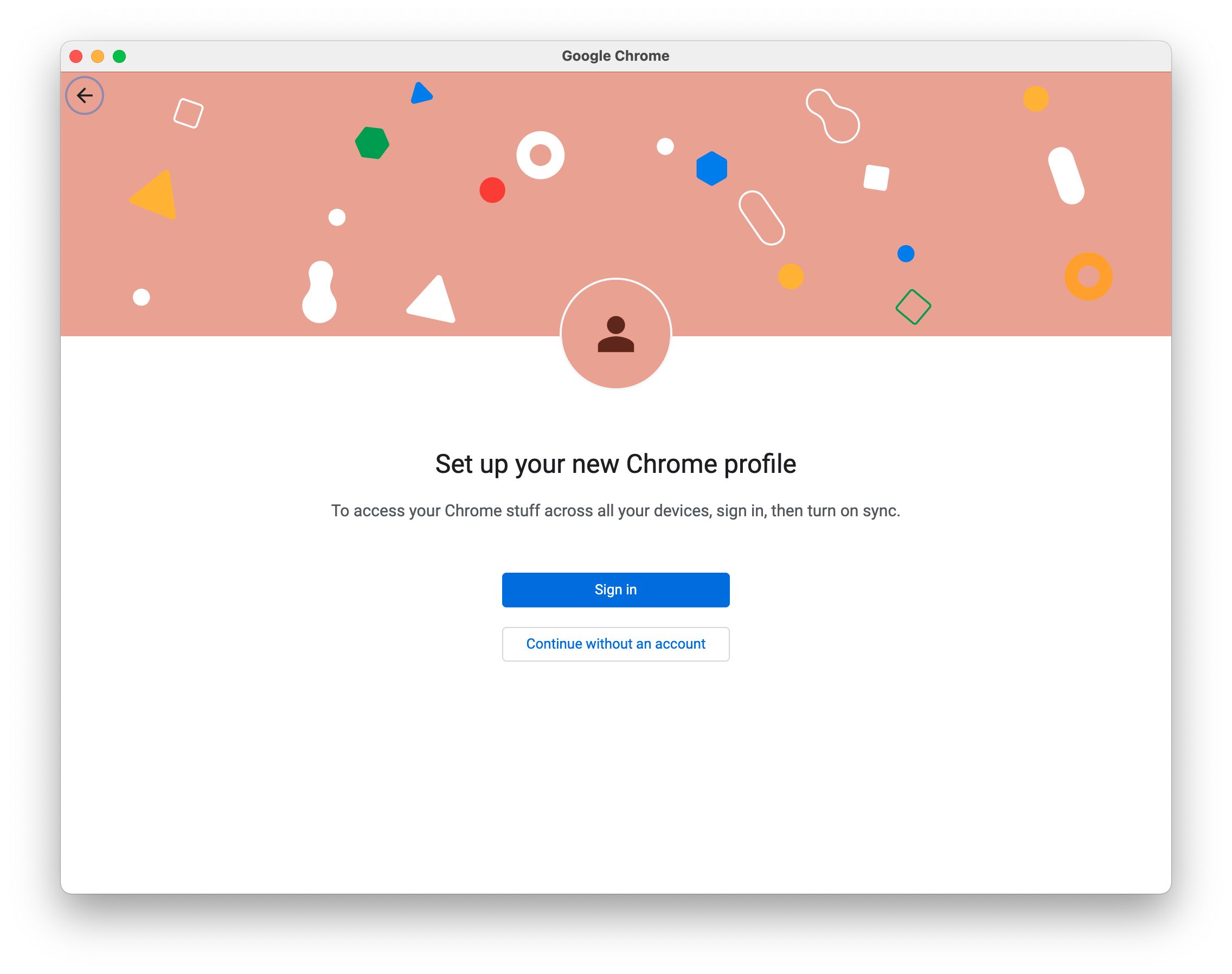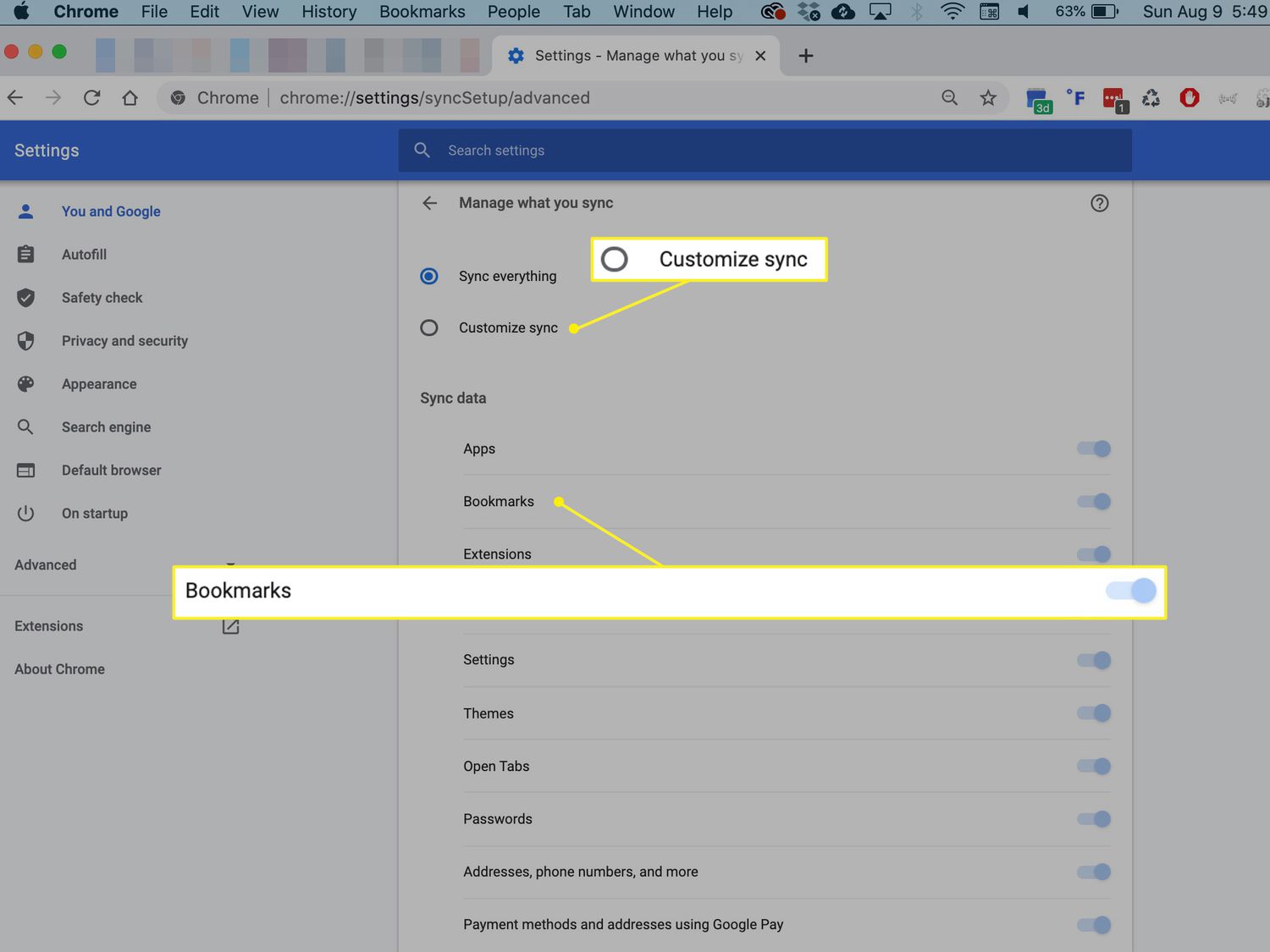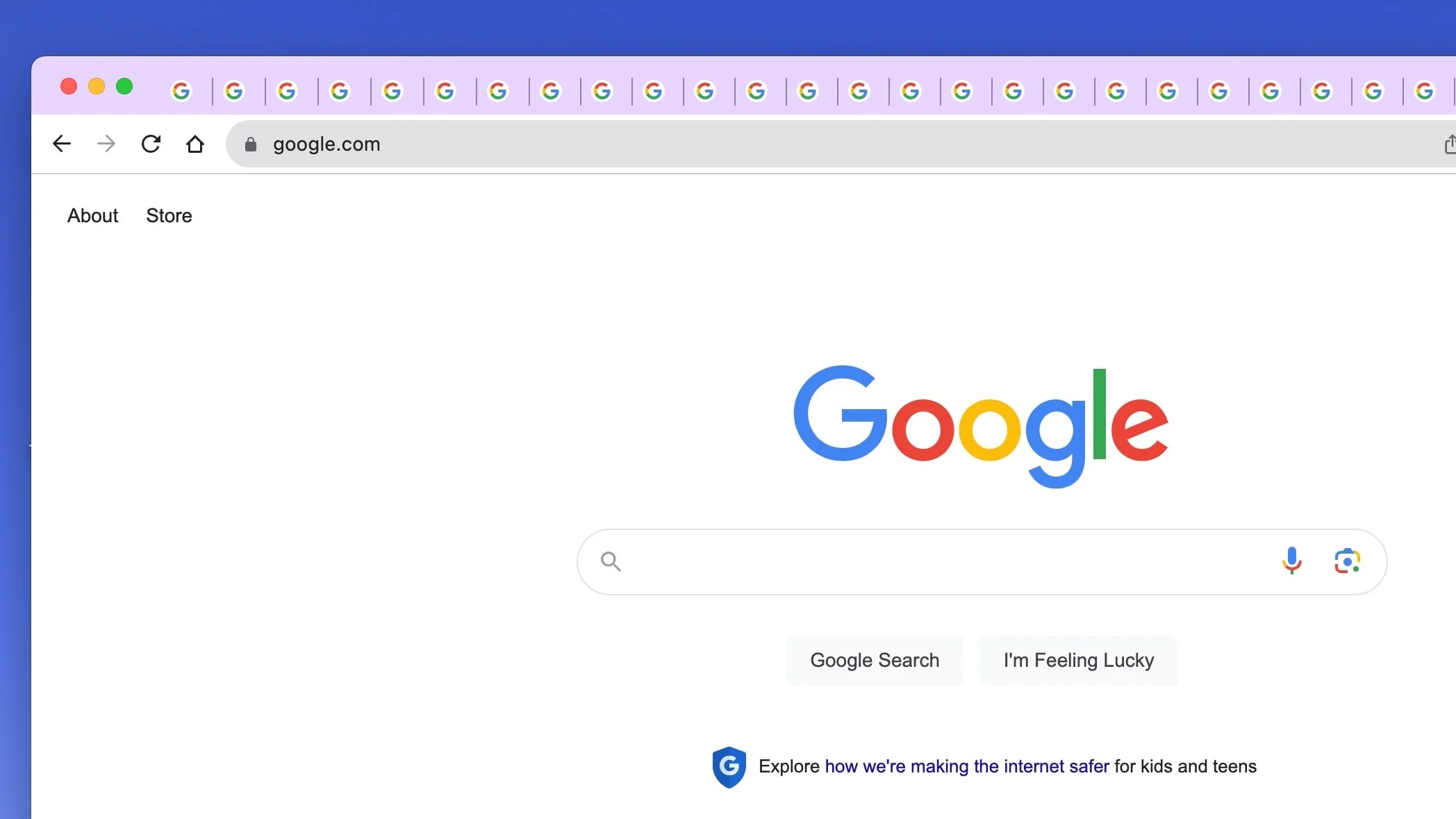Introduction
Google Chrome is a versatile and feature-rich web browser that offers users the ability to create multiple profiles. These profiles allow for personalized browsing experiences, with separate sets of bookmarks, history, and extensions. However, there are instances where users may find it beneficial to merge their Chrome profiles, consolidating all their browsing data into a single profile for simplicity and ease of use.
Merging Google Chrome profiles can be a practical solution for individuals who have accumulated data across different profiles and wish to streamline their browsing experience. By consolidating multiple profiles into one, users can access all their bookmarks, browsing history, and saved passwords from a single location, eliminating the need to switch between profiles.
In this guide, we will walk you through the process of merging Google Chrome profiles, providing step-by-step instructions to help you seamlessly combine your browsing data into a primary profile. Whether you have multiple profiles set up for work, personal use, or other specific purposes, merging them can declutter your browsing experience and make it more convenient to manage your online activities.
By following the steps outlined in this guide, you can effectively merge your Google Chrome profiles and enjoy a more streamlined and organized browsing experience. Let's dive into the process and learn how to consolidate your browsing data into a single, unified profile.
Step 1: Accessing Chrome Profile Settings
Accessing Chrome profile settings is the initial step in the process of merging Google Chrome profiles. To begin, launch Google Chrome on your computer and ensure that you are signed in to the primary profile that you intend to use as the consolidated profile. Once Chrome is open, follow the steps below to access the profile settings:
-
Click on Your Profile Icon: Located in the top-right corner of the Chrome window, you will find a circular icon representing your current profile. Click on this icon to reveal a dropdown menu.
-
Select 'Manage Profile': Within the dropdown menu, locate and click on the "Manage Profile" option. This will open a new window where you can view and manage all existing profiles associated with your Chrome browser.
-
Access Profile Settings: In the "Manage Profile" window, you will see a list of all the profiles that have been created in your Chrome browser. To access the settings for a specific profile, click on the "Edit" button next to the profile name. This will allow you to make changes to the selected profile, including merging it with another profile.
-
Navigate to Chrome Settings: Alternatively, you can access the profile settings directly from the Chrome settings menu. Click on the three-dot icon in the top-right corner of the Chrome window, then select "Settings" from the dropdown menu. In the Settings page, scroll down to the "People" section, where you can manage profiles and access profile settings.
By following these steps, you can easily access the profile settings within Google Chrome, enabling you to proceed with the process of merging multiple profiles into a single, unified profile. Once you have accessed the profile settings, you will be ready to move on to the next step of choosing the primary profile for consolidation.
Accessing Chrome profile settings is a straightforward process that provides you with the necessary access to manage and configure your profiles according to your preferences. With this step completed, you are now prepared to proceed to the next phase of merging your Google Chrome profiles seamlessly.
Step 2: Choosing the Primary Profile
After accessing the profile settings in Google Chrome, the next crucial step in merging multiple profiles is to select the primary profile that will serve as the consolidated profile. The primary profile is the designated profile into which the data from secondary profiles will be merged, creating a unified browsing experience. Here's how to choose the primary profile and prepare it for the consolidation process:
-
Identifying the Primary Profile: Before proceeding, it's essential to determine which profile you want to designate as the primary profile. This decision is based on factors such as the volume of browsing data, the presence of essential bookmarks and saved passwords, and the overall preference for a specific profile. Consider the profile that contains the most comprehensive and frequently used browsing data, as this will become the central repository for all merged information.
-
Accessing Profile Settings: Once you have identified the primary profile, return to the profile settings within Google Chrome. As mentioned in the previous step, you can access the profile settings by clicking on your profile icon in the top-right corner of the Chrome window and selecting "Manage Profile." Alternatively, you can navigate to the Chrome settings menu and access the profile settings from the "People" section.
-
Selecting the Primary Profile: Within the profile settings, locate the primary profile that you have chosen for consolidation. Click on the "Edit" button next to the primary profile to access its settings. Here, you can review and customize the profile details, ensuring that it is set up according to your preferences before merging additional data into it.
-
Reviewing Profile Data: Before proceeding with the consolidation process, take a moment to review the existing data within the primary profile. This includes bookmarks, browsing history, saved passwords, and any other personalized settings. Ensuring that the primary profile is well-organized and contains the necessary data will facilitate a smooth merging process.
-
Preparing for Data Import: As the primary profile is selected and reviewed, it is essential to prepare it for the import of data from secondary profiles. By choosing the primary profile and ensuring that it is optimized to accommodate additional data, you are setting the stage for a seamless consolidation of browsing information.
By following these steps, you can effectively choose the primary profile for merging Google Chrome profiles, setting the foundation for a unified and streamlined browsing experience. With the primary profile selected and prepared, you are now ready to proceed to the next phase of importing data from secondary profiles into the designated primary profile.
Step 3: Importing Data from Secondary Profile
Once you have designated the primary profile and prepared it for the consolidation process, the next step involves importing data from the secondary profiles into the chosen primary profile. This crucial phase allows you to merge the browsing data, including bookmarks, browsing history, and saved passwords, from multiple profiles into a single, unified repository. Here's a detailed walkthrough of the process to seamlessly import data from secondary profiles:
-
Accessing Secondary Profile Settings: Begin by accessing the profile settings of the secondary profile from which you intend to import data. Similar to the process outlined in Step 1, click on your profile icon in the top-right corner of the Chrome window and select "Manage Profile" to access the secondary profile settings.
-
Exporting Data: Within the secondary profile settings, look for the option to export browsing data. Google Chrome provides the functionality to export bookmarks, browsing history, and saved passwords from a specific profile. Utilize this feature to export the data from the secondary profile to a file on your computer.
-
Switching to Primary Profile: After exporting the data from the secondary profile, switch to the primary profile that you have designated for consolidation. Click on your profile icon and select the primary profile to ensure that you are working within the correct profile for the import process.
-
Importing Data: Once you are within the primary profile, access the profile settings as outlined in Step 1. Look for the option to import data, which allows you to upload the file containing the exported data from the secondary profile. Follow the on-screen instructions to import the data into the primary profile.
-
Reviewing Imported Data: After importing the data, take the time to review the content that has been merged into the primary profile. Verify that the bookmarks, browsing history, and saved passwords from the secondary profile are now accessible within the primary profile. This step ensures that the imported data is successfully integrated into the consolidated profile.
-
Organizing Consolidated Data: With the data successfully imported, consider organizing the consolidated data within the primary profile. This may involve rearranging bookmarks, categorizing browsing history, and managing saved passwords to optimize the browsing experience within the unified profile.
By following these steps, you can effectively import data from secondary profiles into the designated primary profile, consolidating browsing data and creating a unified browsing experience. With the data successfully merged into the primary profile, you are now ready to proceed to the final phase of the process, which involves deleting the secondary profiles to streamline your Chrome browser.
Step 4: Deleting Secondary Profile
Deleting the secondary profiles from Google Chrome is the final step in the process of merging profiles, streamlining your browsing experience, and ensuring that all relevant data is consolidated into the primary profile. By removing the secondary profiles that have been merged into the primary profile, you can declutter your Chrome browser and avoid redundancy in your browsing data. Here's a detailed guide on how to effectively delete secondary profiles from Google Chrome:
-
Accessing Chrome Profile Settings: Begin by accessing the profile settings within Google Chrome. Click on your profile icon in the top-right corner of the Chrome window and select "Manage Profile" to view the list of profiles associated with your browser.
-
Identifying Secondary Profiles: Within the profile settings, identify the secondary profiles that have been merged into the primary profile. It's essential to verify that the data from these secondary profiles has been successfully imported into the primary profile before proceeding with the deletion process.
-
Deleting Secondary Profiles: To delete a secondary profile, click on the "Edit" button next to the profile name within the profile settings. This will open the profile details, where you can find the option to delete the profile. Confirm the deletion to remove the secondary profile from your Chrome browser.
-
Reviewing Deletion: After deleting the secondary profiles, take a moment to review the remaining profiles listed in the profile settings. Ensure that only the primary profile and any additional necessary profiles are retained, while the redundant secondary profiles have been successfully removed.
-
Verifying Consolidated Data: Once the secondary profiles have been deleted, verify that all the relevant data from these profiles is now accessible within the primary profile. This includes bookmarks, browsing history, saved passwords, and any other personalized settings that have been consolidated into the designated primary profile.
-
Optimizing Browsing Experience: With the secondary profiles removed and the data consolidated into the primary profile, take the opportunity to optimize your browsing experience. Organize bookmarks, customize settings, and explore the unified browsing data to ensure a seamless and efficient browsing experience within the consolidated profile.
By following these steps, you can effectively delete secondary profiles from Google Chrome, completing the process of merging profiles and streamlining your browsing environment. With the redundant profiles removed, you can enjoy a more organized and efficient browsing experience within your Chrome browser, all while benefiting from the consolidated data within the primary profile.
Conclusion
In conclusion, merging Google Chrome profiles offers a practical solution for streamlining and organizing your browsing experience. By consolidating multiple profiles into a single, unified profile, users can enjoy the convenience of accessing all their browsing data, including bookmarks, browsing history, and saved passwords, from a centralized location. The process of merging profiles involves accessing profile settings, choosing a primary profile, importing data from secondary profiles, and deleting redundant profiles to create a seamless and efficient browsing environment.
Through the step-by-step guide provided in this article, users can effectively navigate the process of merging Google Chrome profiles. By accessing the profile settings and selecting a primary profile, individuals can designate a central repository for their browsing data. Importing data from secondary profiles into the chosen primary profile allows for the consolidation of bookmarks, browsing history, and saved passwords, creating a unified browsing experience. Finally, deleting secondary profiles removes redundancy and streamlines the Chrome browser, ensuring that all relevant data is accessible within the consolidated primary profile.
The benefits of merging Google Chrome profiles extend beyond decluttering the browsing environment. By consolidating data into a single profile, users can simplify their browsing activities, reduce the need to switch between profiles, and optimize their overall browsing experience. Whether for personal use, work-related tasks, or specific projects, the ability to merge profiles offers a practical solution for managing and organizing browsing data effectively.
Furthermore, the process of merging profiles in Google Chrome aligns with the evolving needs of users who seek efficiency and convenience in their online activities. By consolidating browsing data, users can enhance productivity, maintain a cohesive browsing environment, and ensure that essential information is readily accessible within a unified profile.
In essence, the process of merging Google Chrome profiles empowers users to create a personalized and streamlined browsing experience. By following the outlined steps and leveraging the functionality provided by Google Chrome, individuals can consolidate their browsing data, optimize their profiles, and enjoy a more efficient and organized online experience. Whether for personal or professional use, the ability to merge profiles in Google Chrome offers a valuable solution for simplifying and enhancing the browsing journey.
























